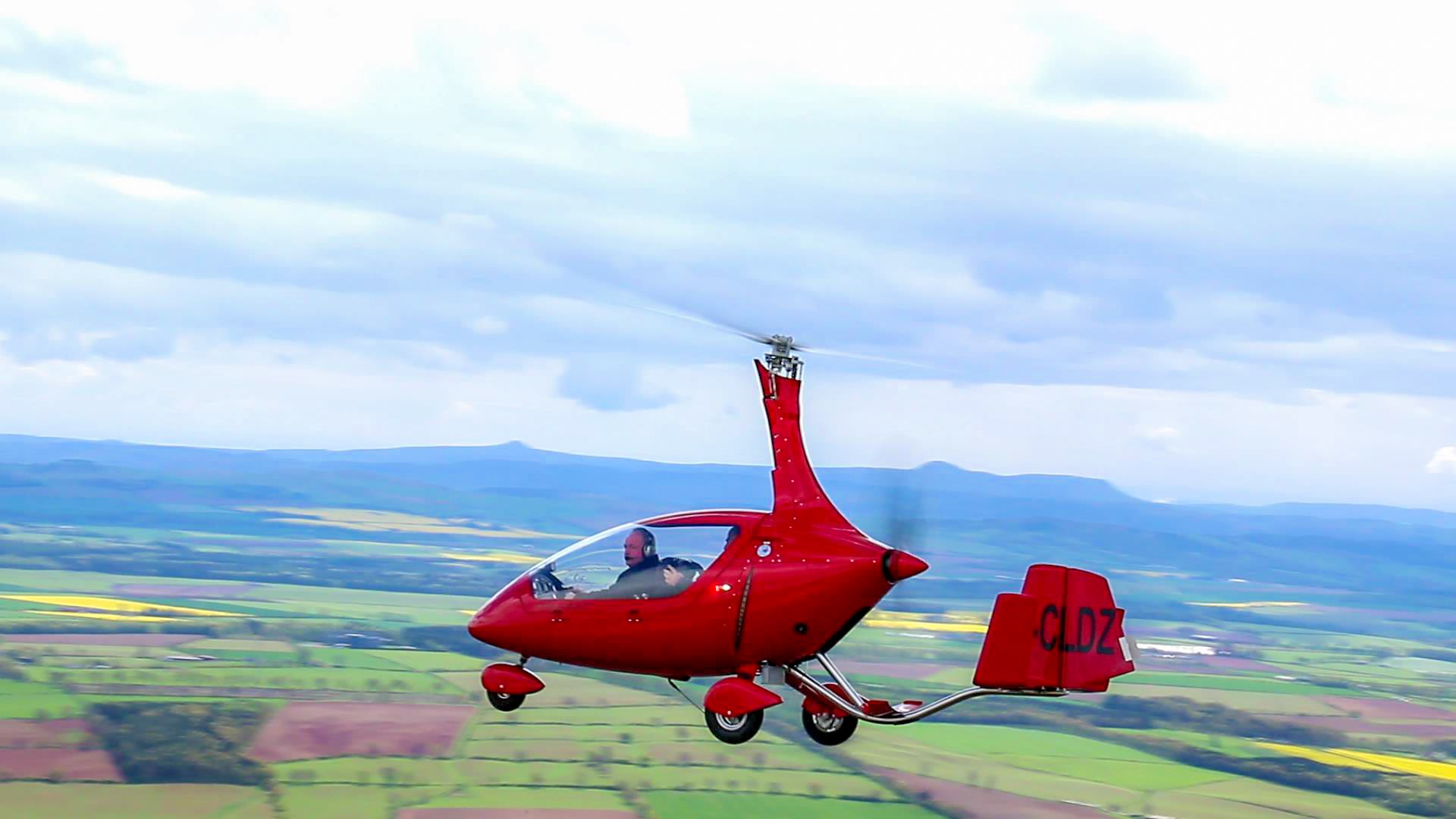Microlight and Gyrocopter Centre
GyrocopterGYROCOPTER FLIGHT TRAINING AND EXPERIENCES
Information about the Gyrocopter:
MTOSport10 “G-CIDF” 2 seat tandem open cockpit Gyrocopter.
Maximum take-off weight 500 kgs
Empty weight: 278 kg
Engine: Rotax 912 ULS 100HP 4 Stroke.
Takeoff distance: 70 to 150 meters
Max endurance: 4 hours
Max range: 250 miles
Cruise speed: 80 mph
Max speed (VNE) 120 mph
Fuel capacity: 70ltr
Compliant with: CAA BCAR Section T
Learn to fly a gyrocopter
Operating from the Scottish Aero Club at Perth Airport, Alba Airsports can offer you gyrocopter flight training in modern open-cockpit gyrocopters, and experience flights in both open cockpit and enclosed-cockpit gyrocopters. We offer both flight training by the hour, and intensive training courses for ab-initio and converting pilots.
Fly a Gyrocopter at Perth
Who can learn to fly a Gyrocopter?
Anyone. Individuals who are reasonably fit and within the weight and height limits.
Weight Limit – 16.5st / 105 kilos.
Height Limit Open Cockpit – 6ft 3in / 191cm
Height Limit Enclosed Cockpit – 6ft / 183cm
Interested in flying a Gyrocopter? Call us on 07411 74 72 72 or fill in our Contact Us form and we’ll be in touch very soon.
If the Gyrocopter isn’t for you, then have a look at our Fixed Wing and Flexwing pages, to find other ways you can experience the joy of flying.
Calidus “G-CLDZ” 2 seat tandem enclosed Gyrocopter.
Maximum take-off weight 560 kgs
Empty weight: 309 kg
Engine: Rotax 914 UL 115HP 4 Stroke.
Takeoff distance: 70 to 150 meters
Max endurance: 4 hours
Max range: 250 miles
Cruise speed: 80 mph
Max speed (VNE) 120 mph
Fuel capacity: 75ltr
Compliant with: CAA BCAR Section T
Gyrocopter Pilot Training
As well as pre-booked training by the hour, Alba Airsports also offers an option of 5-day intensive training courses for student pilots. Courses cater for students who want to train for a Private Pilot’s Licence for Gyroplanes or PPL(G) in addition to advanced flying training for existing pilots. Training courses are held during the week with a maximum of two students on each intensive training week. Students take it in turns to fly and depending on their stage of training, may share briefings.
During intensive training you can expect to fly an average of two and a half hours each day. Learning to fly is very intense and it takes a while for your brain to assimilate what you’ve been taught so it’s important to build in rest time. We discourage students from booking intensive training weeks back-to-back because it isn’t the most productive way to learn. You need time to fully understand and absorb everything you’ve learned. The optimum gap between training weeks is between one and four weeks, however, it is not unusual to have students who are learning to fly over a couple of years and have longer gaps between each intensive week.
We fully understand and respect that you will probably use valuable free time in learning to fly and we make every effort to fly despite sometimes less than ideal weather conditions. We will sometimes rearrange the order that things are taught to make the best use of the varying British weather conditions. When flying is not possible we switch our attention to the various ground school topics to ensure that time isn’t wasted.
Feedback has shown that it can be extremely beneficial to immerse yourself in training when learning to fly and our intense training courses are designed. However, if it is not possible for you to enrol in an intensive course, we will work with you to deliver a training programme via shorter lessons over a longer period.


